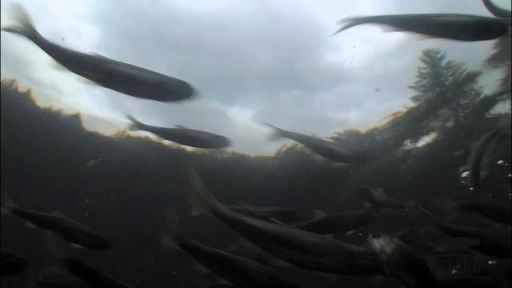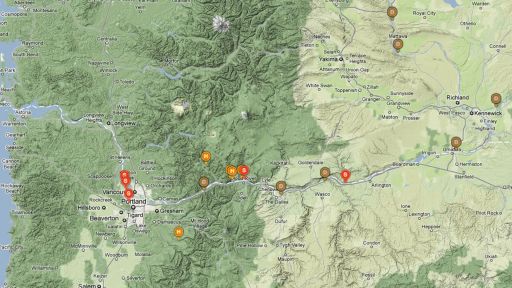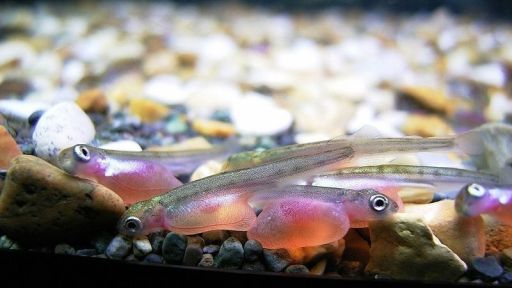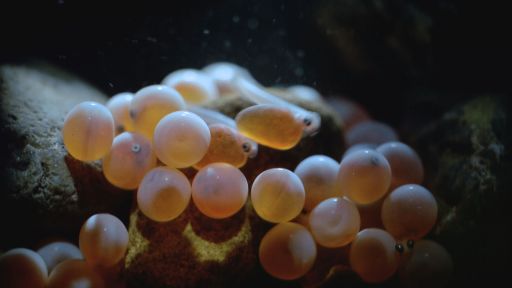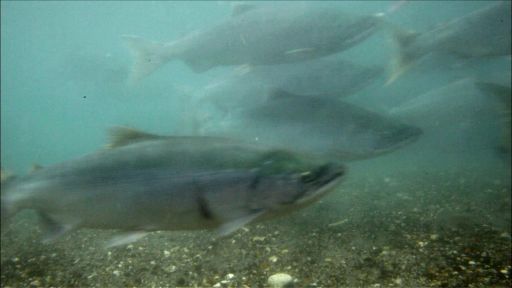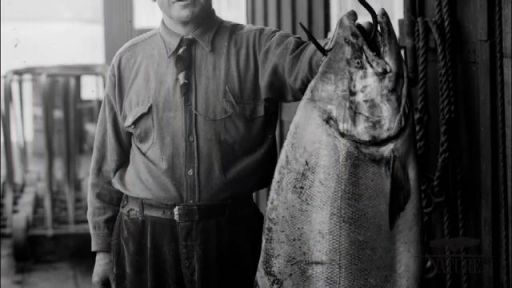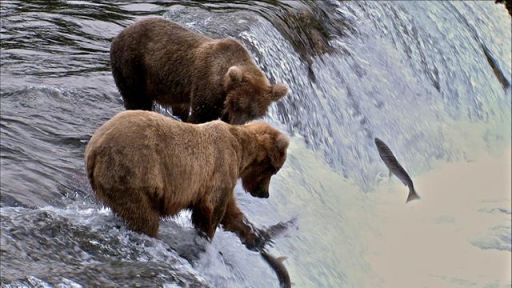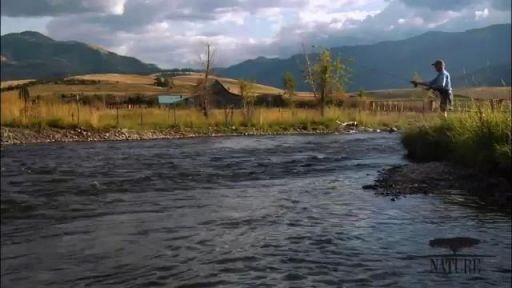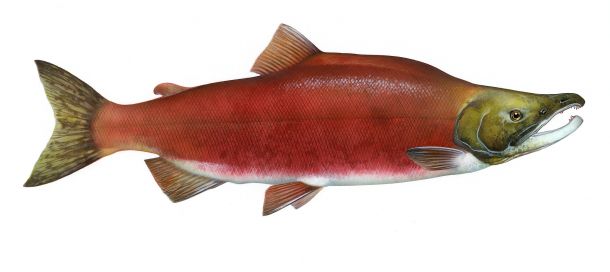
Sockeye Salmon (Credit: Timothy Knepp/ U.S. Fish and Wildlife Service)
Order: Salmoniformes
Family: Salmonidae
Subfamily: Salmoninae
Genus: Oncorhynchus
Species: The major species of salmon that populate the Pacific Northwest include:
Chinook (Oncorhynchus tshawytscha)
Chum (Oncorhynchus keta)
Coho (Oncorhynchus kisutch)
Pink (Oncorhynchus gorbuscha)
Sockeye (Oncorhynchus nerka)
Steelhead (Oncorhynchus mykiss)
Size and Weight: Size and weight varies depending on species. The length of a mature salmon can range from between 20 inches to almost 5 feet. Adult salmon can weigh anywhere between 3 lbs to over 100 lbs.
Diet: Young salmon feed on small aquatic insects and zooplankton. As salmon grow and mature, they feed on larger animals including shrimp, eels, and smaller fish. Unlike other species of Pacific salmon, zooplankton makes up the majority of the sockeye diet throughout their lifecycle.
Geography: Salmon are anadromous; meaning that they are born in fresh water, migrate to the seas where they spend most of their adult life, and then return to their home range of fresh water to spawn. Certain species, however, stay in their freshwater homes and are known as landlocked salmon. Salmon of the Pacific Northwest are based primarily in and around the Columbia River Basin before migrating out to the Pacific. (Other species of salmon can be found in the western Pacific Ocean in Japan, Taiwan, Korea, and Russia and off both coasts of the Atlantic Ocean.)
Reproduction: After spending one to five years at sea (depending on the species), sexually mature salmon return to fresh-waters to spawn. Accompanied by a male, the female uses her tail to create a depression in the riverbed, known as a redd. To fertilize the eggs, the male then deposits milt, or sperm. After the female covers the depression with gravel, she moves on to create a new redd. During the spawning period, one female may create up to seven separate redds and lay between 2500-7000 eggs.
Lifespan: Salmon live anywhere from 2-8 years, depending on the species. Spawning generally marks the end of the salmon’s lifecycle, with most species dying within days or weeks of reproducing.
Threats: Man-made dams and reservoirs threaten salmon numbers in the wild by blocking their paths, creating obstacles for young salmon heading for the ocean and adult salmon returning to their spawning grounds. Overfishing, habitat loss, and a number of changing environmental conditions also continue to affect many salmon populations. For instance, rising river temperatures have been connected to an increase in marine illnesses that adversely affect salmon growth.
Additional Facts:
- In addition to Oncorhynchus genus, the Salmoninae subfamily also includes the Brachymystax, Hucho, Salmo, Salvelinus, Salvethymus, and Acantholingua genera.
- The genus, Oncorhynchus, derives from the Greek words, onkos (hook) and rynchos (nose), describing the hooked jaws prevalent in many species of sexually mature male salmon.
- Steelhead were grouped with trout until the 1990s, when they were reclassified in the Oncorhynchus genus with salmon.
- Salmon stop eating once they head toward their respective spawning grounds. They rely solely on fat reserves for energy.
- Salmon can jump up to 6.5 feet (2 meters), a skill that helps them in their upstream swim to their spawning grounds.
- It is not until sexually mature salmon return to fresh waters that the different species develop drastically different physical appearances. Males often have brighter coloring than the females. Depending on species, many males also develop humps and hooked jaws, known as kypes.
- Scientists believe that salmon rely heavily on their olfactory senses to find their way to their spawning ground.
- Chinooks travel further to spawn than other salmon. A Chinook salmon tagged in the Aleutian Islands and recovered in Salmon River, Idaho was determined to have traveled 3,500 miles to spawn. Chinook salmon are also the largest of the species – the record is 126 lbs., though most weigh about 30 lbs.
- Pinks are the smallest of Pacific salmon with an average weight of 3.5 to 4 lbs.
- About 75% of the salmon we consume in the United States is farmed salmon.
- Kunimasu salmon, believed to have been extinct since the 1940s, were recently found in a Japanese lake near Mount Fuji in December 2010.

